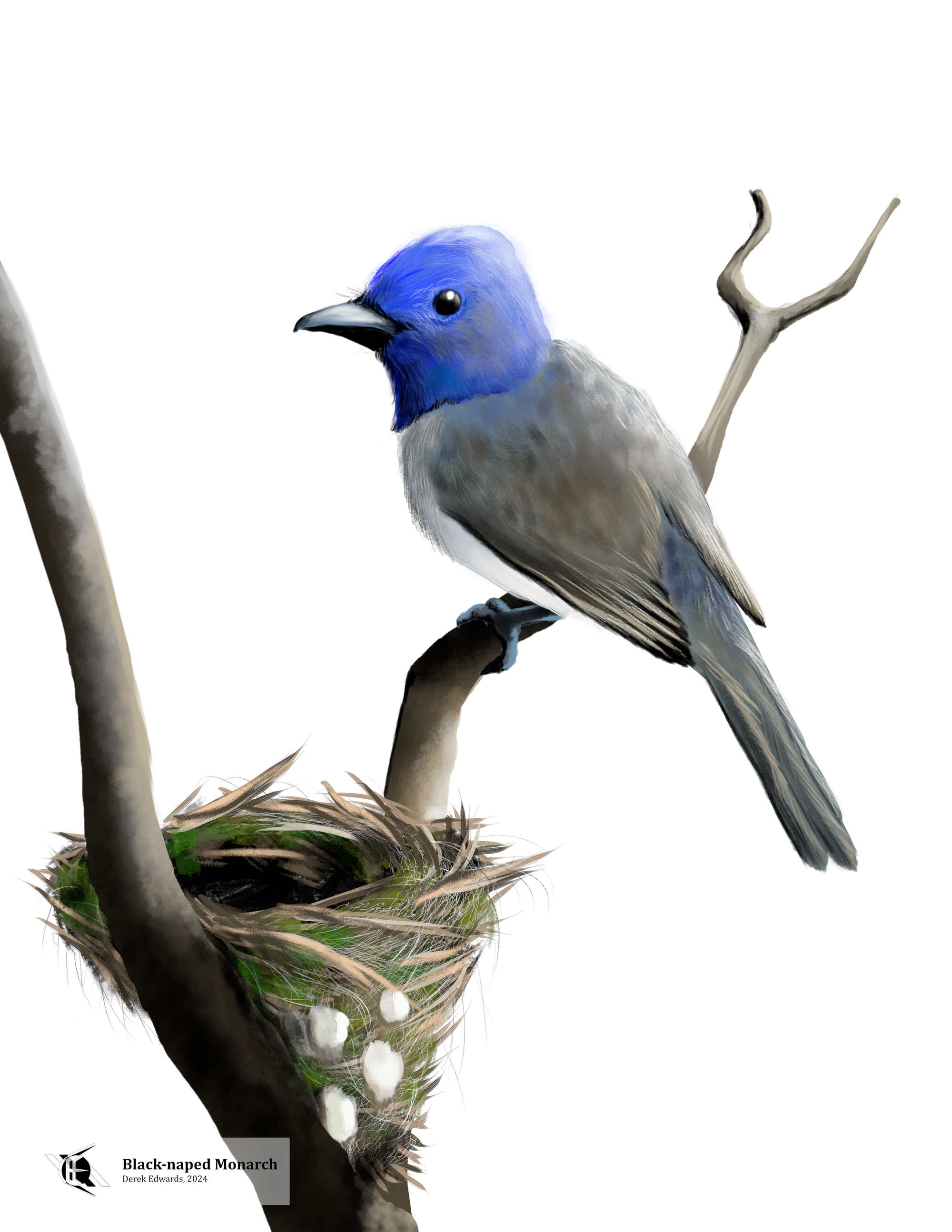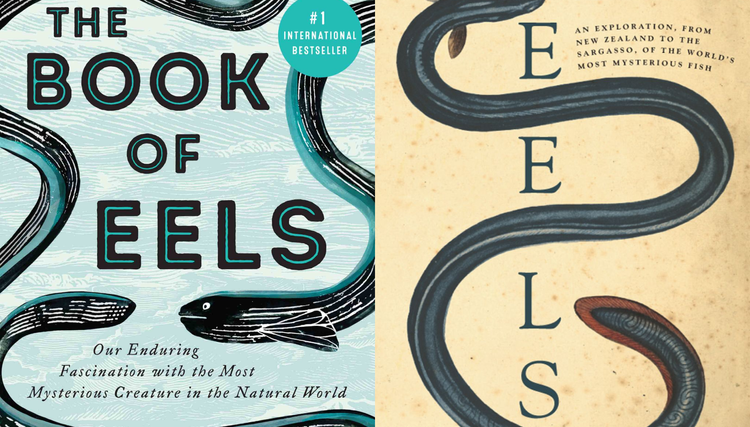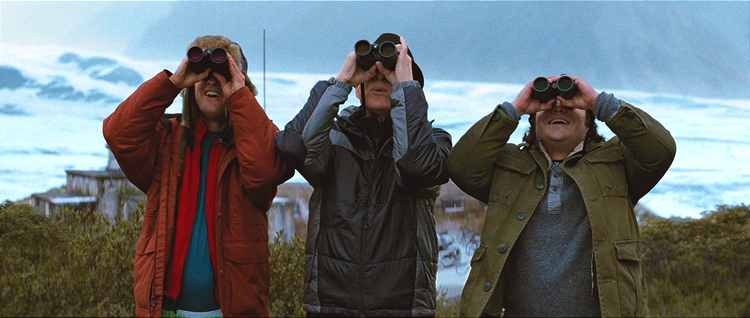
Running Commentary 5/20/2024
Hello,
During good birding times of year I like to make a visit to Kensington Metropark in Milford, Michigan, which is home to some very friendly cranes and other birds. But I'm hearing that, apparently, someone has released their unwisely-kept pet alligator in Kent Lake there, which would be a bigger problem than most alligators since it would expect people to feed it. I won't be going until I hear that thing's been found and caught, at least.
Anyway...
Watching...

Secrets of the Octopus
Octopuses are some of the stranger things on Earth, so they make good TV. Secrets of the Octopus is a three-episode streaming series from Disney+ and National Geographic. It was released for Earth Day, but I admit I only watched the final episode yesterday. But just because it's not must-see TV doesn't mean it's bad. It's a solid, solid nature documentary. It's especially impressive that it's all underwater, which is hard to shoot. I knew a bit about octopuses going in, namely basically what they are and that they're pretty smart, but I really enjoyed seeing them live their lives. There are a lot of excellently-captured scenes across the three episodes. Paul Rudd does the narration, in keeping with the tradition for random celebrities narrating things that go back to the Disney Nature films; he does fine, although I'm not sure what having him, specifically, do the voice-over really adds. The more interesting voice to my ears was that of Alex Schnell, the main featured octopus researcher who sounds quite a lot like Michelle Ang as Omega in The Bad Batch, but older. Go ahead and watch this series if you haven't; it's interesting and well put-together and just about the right length. Good stuff.
Eating...

Cashew Chicken
This recipe is adapted from one from Cook’s Country. I changed the amount of cornstarch to make the sauce looser. (I didn't like how weird and claggy it was when I made it to-recipe, but you might; if you do, double the cornstarch in my recipe.) I also swapped chicken breast for chicken thigh meat, which I think works better in the dish.

This dish is rather typical of Chinese-American cuisine. From what I understand after reading Petroski's The Design of Everyday Things, the bite-sized nature of the finished dish has its roots in an exhortation by Confucius to keep knives away from the dinner table. The development of the east Asian chopstick (as opposed to the European fork) is also rooted in this thinking.
Ingredients:
- 1 1/2 lbs. chicken breast or thigh meat, skinless
- 5 TBSP soy sauce
- 1 TBSP sesame oil
- 1 TBSP cornstarch
- 1 TBSP dry sherry
- 1/3 cup hoisin sauce
- 1/3 cup water, less if using thigh meat
- 1 TBSP balsamic vinegar (or Chinese black vinegar, if you can get it)
- 3 TBSP vegetable oil
- 1 cup raw cashews
- 2 ribs celery
- 6 scallions
- 2 cloves garlic
- 1 tsp ground ginger
- 1/2 tsp red pepper flake
Procedure:
- Prepare vegetables: mince garlic, slice scallion whites thin, cut scallion greens into half-inch long pieces, cut celery on bias in quarter-inch long pieces. Put garlic, scallion whites, celery, ginger, and red pepper flake in a bowl for later.
- Cut chicken into bite-sized pieces and toss with 2 TBSP of the soy sauce, cornstarch, sherry, and sesame oil in a large bowl.
- Mix together remaining 3 TBSP soy sauce, hoisin, water, and vinegar in a separate bowl.
- In a large non-stick skillet, heat vegetable oil over medium heat until shimmering.
- Add cashews to the pan. Stir them constantly for 5 minutes as they toast, then remove them, leaving the oil.
- Bring the pan to medium-high heat, and add chicken. Cook the chicken while stirring for 3 minutes to brown it.
- Add the bowl of vegetables from step 1 to the pan and cook for 2 minutes.
- Add the hoisin mixture from step three, bring to a boil, and cook for another 2 minutes or until the chicken is cooked through
- Take the pan off heat and add cashews and scallion greens to serve.
See all of Derek's best recipes on Notion

Bird of the Week
So far in this space we've had Old World flycatchers, we've had a tyrant flycatcher, we've even had a silky-flycatcher. But we are not done with different flycatcher families. This week we're looking at one of the monarch flycatchers: the Black-naped Monarch.
The monarchids are found throughout the tropics and non-polar regions of the Southern Hemisphere, with the notable exception of the Americas (where there are tyrant flycatchers instead). There are presently an even 100 species classified in the family Monarchidae – by Cornell's reckoning – including four extinct species,1 though, as is often the case with such large families, there's ongoing debate as to which genera should or shouldn't be included. Most birds in the family are referred to either as monarchs, as flycatchers, or as paradise-flycatchers. While they resemble the Muscicapidae and Tyrannidae flycatchers in their looks and habits, the Monarchidae are more closely related to crows and shrikes.
The black-naped monarch is found in South and Southeast Asia, from tropical India and Sri Lanka over to Indonesia and Taiwan; it was first described based on specimens from the Philippines. Males are all-blue above and in front, save for the namesake patch of black on the backs of their heads; females, such as the bird I've drawn, are blue-headed and gray-bodied, without the black nape. Monarch pairs are monogamous for the year, and both help build and care for the nest, generally a small cup set into the crook between two twigs, made up of small bits of forest detritus held firmly together with spider webs. Two to four eggs are laid inside.
Speaking of the nest, that's really why I drew this bird. Nests can be tricky to draw, so I tend to avoid them. But nests are important for birds. Not, as is commonly believed, because that's where birds live. Despite millions of children growing up watching Big Bird living in a nest next to Oscar's trash can, a nest is not the bird equivalent to a house. While woodpeckers may continue to seek refuge in their cavities, for the vast majority of birds, nests are abandoned as soon as baby birds fledge. Nests are for incubating eggs and protecting young until they can survive in the world.2 Otherwise, birds don't really live in structures. They spend their waking hours foraging for food, mostly, and they don't sleep through the night as soundly as we do; if they find a secure perch, they'll sleep for a small burst there, but typically not for hours on end.3 Adults in a nest must, in fact, remain more alert to defend their young.
The term "monarch" was first applied to a bird of this family by a team of naturalists, the American Thomas Horsfeld and the Irish Nocholas Aylward Vigors, in 1827. They were working to classify specimens of Australian origin, and noted the similarity of what they called the black-faced monarch to the tyrant-flycatchers of the Americas, and so they gave it a similarly regal name.4 "Monarch" comes to English from the Greek for "single rule", i.e. rule by a single person; true monarchies are rare today, although many countries maintain at least a symbolic monarchy through social tradition of legal expedience. To science, the black-naped monarch is Hypothymis azurea; the genus name is the name given to an unknown bird, almost certainly not a monarch flycatcher, but the ancient Greek writer Aristophanes, and seems to have been chosen at random by the German naturalist Friedrich Boie; the species name means "blue" in Latin.5
- Winkler, D. W., S. M. Billerman, and I. J. Lovette. "Monarch Flycatchers (Monarchidae)", (2020) Birds of the World (S. M. Billerman, B. K. Keeney, P. G. Rodewald, and T. S. Schulenberg, Editors). Cornell Lab of Ornithology, Ithaca, NY, USA. https://doi.org/10.2173/bow.monarc2.01
- Beals, Sharon. “Small Miracles: The Wonder of Birds’ Nests.” Audubon, February 21, 2023. https://www.audubon.org/magazine/march-april-2008/small-miracles-wonder-birds-nests
- “Do Birds Sleep?” Cornell Lab of Ornithology K-12 Education, October 19, 2023. https://www.birds.cornell.edu/k12/do-birds-sleep/.
- Horsfeld, Thomas, and Nicholas Aylward Vigors. “‘Genus. Monarcha.’” Transactions of the Linnean Society of London 15 (1827): 254–59. https://www.biodiversitylibrary.org/page/778508.
- Jobling, J. A. (editor). The Key to Scientific Names in Birds of the World (S. M. Billerman et al. editors), Cornell Laboratory of Ornithology, Ithaca.
Curation Links
Music of the Squares | Carmel Raz, The Public Domain Review
“Understanding the same laws to apply to both visual and aural beauty, David Ramsay Hay thought it possible not only to analyse such visual wonders as the Parthenon in terms of music theory, but also to identify their corresponding musical harmonies and melodies. Carmel Raz on the Scottish artist’s original, idiosyncratic, and occasionally bewildering aesthetics.”
J.S.Bach : Gigue, BWV 1006, alto recorder | Guido Hulsens
[VIDEO] The recorder gets a really bad rap because most people only hear it played by small, untrained children. But in the hands (and mouth) of someone who knows what they’re doing, it makes quite nice music. In a reversal of the usual arrangement, we have an adult playing well for a small child. (3 minutes)
The drinking fountain button is tragically misunderstood | Sean Hollister, The Verge
The Verge has a series called “Button of the Month”, which is like my “Bird of the Week”, except less frequent, about push-buttons, and they just grab their drawings from patent filings. This is about the old-school mechanical buttons on drinking fountains, but I’ll certainly be reading all the others.
The Map | Venkatesh Rao, Ribbonfarm
[FICTION] “To look at, no through the map was to gaze into the evolving, distilled, soul of the territory. The AR display overlays generated from the map, some nostalgics argued, had some of the charm of old black and white photographs by the early masters of photography, gently tugging the eye and soul into communion with the territory they framed and presented. And even the least poetically minded had to admit there was some truth to that.”
See the full archive of curations on Notion







Member Commentary